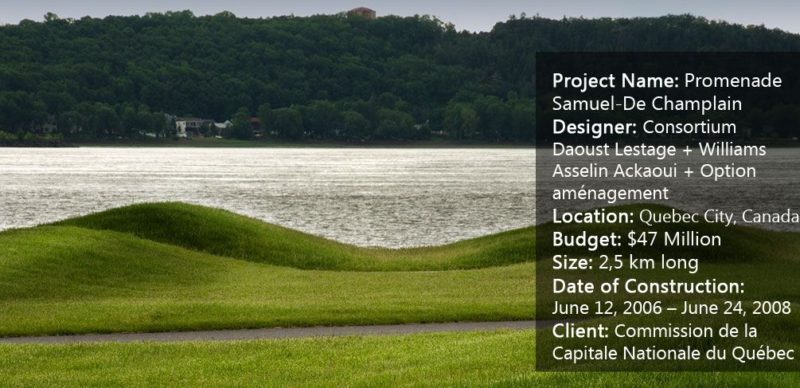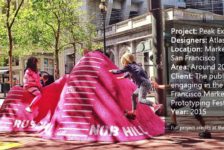A strong, powerful and dynamic portfolio can be the difference between you getting a job and looking for a job. Here are 8 tips to make a knockout landscape portfolio. Your portfolio is a showcase of your best work, a creative expression of you, and a way to demonstrate the breadth of your talent. It provides a brief snapshot of what you can do and gives you the chance to create a fluent first impression. Therefore, you need to spend the time and the energy to get it right, whether you are a landscape architecture student or a graduate. For this article, I have searched for some of the most creative landscape portfolio designs and pulled together a selection of great tips and advice to make sure that your portfolio becomes the very best it can be. Read on to discover how to create a knockout portfolio.
Landscape Portfolio
1. I want to be a landscape architect… Tell us a story A portfolio isn’t just a collection of work. In fact, it is more than that: It should tell a story about you; draw your career and professional path, and illustrate your vision about landscape design. You should highlight your projects, your skills, and your passions, as well as your goals. WATCH: I want to be a landscape architect…
2. You Only Have One Chance to Make a First Impression An introductory page should be eye-catching, making the reader curious about you and your work. So make sure to use the title page to share a little about your background and to give your portfolio a story that makes more sense with an engaging intro. A good rule of thumb is to keep it simple — a few well-worded sentences will get the job done. 3. Know the purpose of each project Before you rush into building your portfolio, you first need to know the purpose of every project in it. That purpose should be somehow related to highlighting your talent and abilities as a landscape designer. Do you want to show that you are an award-winning landscape designer? Or is it all about your graphic design skills and the way you proceed to get your projects realized? WATCH: landscape architecture portfolio
4. Quality Over Quantity Take the time to look at all of your work and carefully select relevant projects for your portfolio. Don’t show hundreds of examples; show only the projects that you are really proud of. It’s always better to have a portfolio that displays a few remarkable projects rather than dozens of projects if some of them are just “average”. Related Articles:
- 5 Mistakes You Should Avoid When Designing Your Portfolio
- 10 Great Interview Tips For Graduate Landscape Architects – The Essential Guide
- 10 Great Apps for Landscape Architects – Part 2
5. Organization Even if your work is absolutely flawless, it won’t speak for itself unless you create a decent presentation that will make it stand out from the crowd. Get into the nitty-gritty of each project and figure out the best way to present it. Make sure your portfolio is organized by project or by type of work, then present your process based on the steps you followed (Initial concept, early sketches, and the finished product). Remember that the person who is evaluating your work would eventually like to know the story behind your last result, so think about contextualizing the project with a short paragraph and adding a title to sum it up. Landscape hand drawings would be a big plus to emphasize your projects. WATCH: T. Clark Stancil – Landscape Architecture Portfolio
6. Recognition Since at this level you have all of the necessities, consider any other distinctive elements that you can customize and include to give you an extra edge. Add distinctive elements, such as awards, scholarships, details of training, workshops, and others. 7. Give it a regular spring cleaning Keep in mind that your work doesn’t end with just creating that outstanding portfolio. You’ll also want to regularly refresh it. When you create new work, make sure you make additions to feature your latest projects. But try to organize your work with the same level of careful curation that you started with in the beginning. 8. Share it! Now that your landscape portfolio is ready to shine, you surely want a place where people can find you online and learn more about what you do. For that, you have to deploy portfolio pieces to Behance, Flickr, Issuu, Calaméo … The more places you share your work, the more you’ll drive traffic toward you and your portfolio. – Beyond any doubt, creating a landscape architecture portfolio can be an exhausting task, as it can take hours and hours of editing and revising. But everyone in the field has to go through it, as it remains a required step for getting into some great landscape architecture firms. It is just that there are landscape architects who will fight to nail their portfolios while others will choose to take the easy shortcut and just hope that it will work. Recommended Reading:
- Portfolio Design (Fourth Edition) by Harold Linton
- Burn Your Portfolio: Stuff they don’t teach you in design school, but should by Michael Janda
Article by Naila Salhi Return to Homepage Featured image: Printscreen from Youtube, source
Published in Blog









Pingback: Things to Do to When Choosing a Landscape Designer